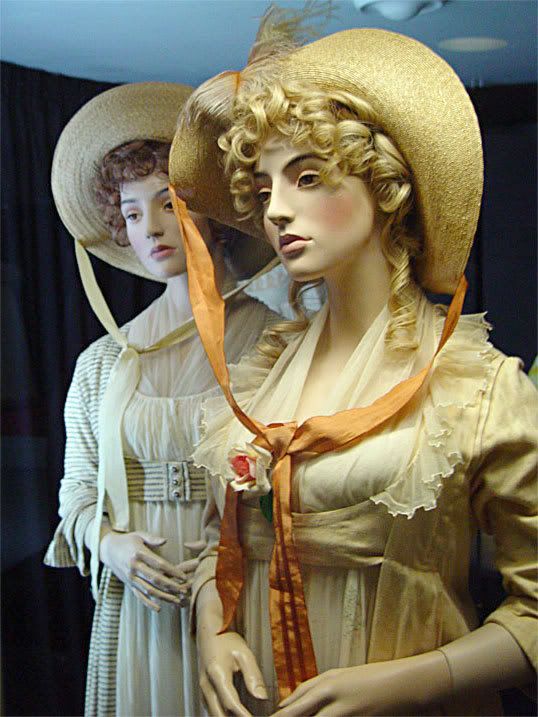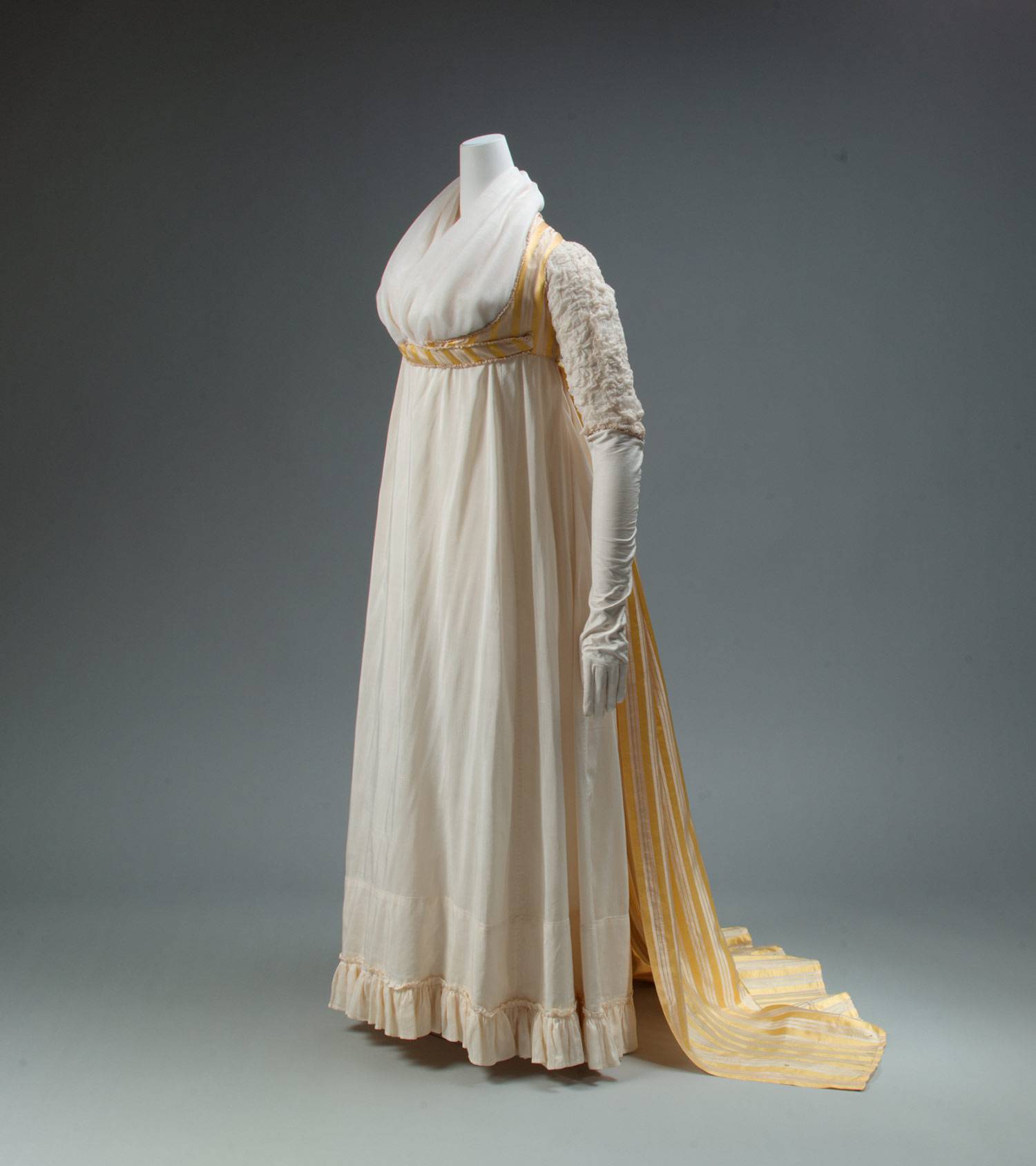
I'm experimenting with making a pattern from one of my extant regency gowns. Somehow my lines don't look right, and I'm seeking comments from people more experienced than myself at this.
See new blog at http://aylwen.blogspot.com


 The pattern is missing the front piece at the moment as I ran out of interfacing. It is basically pieces of fabric joined together at the seams.
The pattern is missing the front piece at the moment as I ran out of interfacing. It is basically pieces of fabric joined together at the seams.


 Empress Josephine [below] wore a sleeveless open robe at her coronation in 1806.
Empress Josephine [below] wore a sleeveless open robe at her coronation in 1806.


Marblehead, Massachusetts, United States
Center front: 134.6 cm (53 in.)
Center back: 177.8 cm (70 in.)
Dress: silk satin, embroidered with silk and metallic thread, silk trim;
Petticoat: cotton mull embroidered with silver
Classification: Costumes
Object is currently not on view
Wedding dress in two parts, worn by Eunice Hooper at her marriage to her cousin John Hooper, in Marblehead, Mass. Overdress of white satin (now cream colored), short waisted, surplice line in front, open down entire length of front, fullness in back in narrow pleats caught to high waist line, hanging free to form train, elbow length sleeves trimmed with folds of georgette crêpe caught with circlets of artificial pearls. Shoulder, center,and side back seams, edges of sleeves, and entire edge of overdress except for train finished with white silk fly fringe.
Museum of Fine Arts, Boston
Gift of Mrs. Ward Thoron, 1948
Accession number: 48.1198a
Sewing lessons are now available for beginner/intermediate level sewers who wish to make a historical costume.
Hourly rates are as follows:
Private lesson, student brings all supplies (my machine may be used) $20.00/hr.
Semi-private lesson, students bring all supplies (my machines may be used) $15.00/hr./student.
Small group (3 students), students purchase/bring all supplies (my machines may be used) $10.00/hr./student.
Private lesson, all materials supplied $30.00/hr.
Semi-private/group lesson, 2-3 students, all materials supplied $25.00/hr./student.



In studying the antique and comparing them with the modern fashions, there are no greater contrasts than in the styles of headdress.
Women always wore flowing drapery, of course varying with fashion's freaks, but still, from the time of the most antique statue to the present day, flowing skirts are found, sometimes suffered to fall in the folds of the material, sometimes drawn gracefully(?) over three or four tiers of hoops. Now in dressing the hair there is no set style of arrangement, "on the contrary, quite the reverse," as Paddy has it. We find, first, the classic style, then the pyramid, then loosely flowing, then a la Chinois, then in bandeaux, again in braids and puffs or curls, and occasionally a slight return to the classic. Of course, with the hair arranged as it was worn some twenty-four or five years ago, it would have been absurd to wear a modern bonnet, and so these pretty head protectors must vary with the style of coiffure they cover or display.